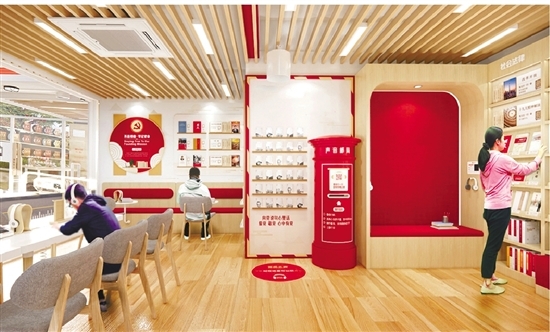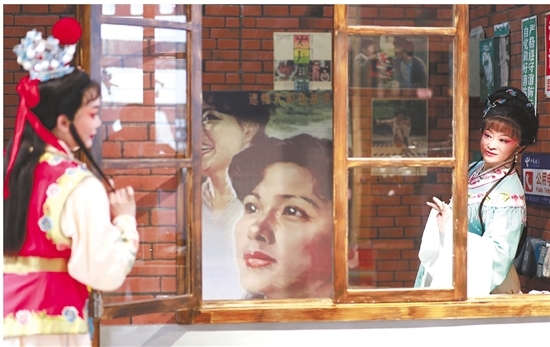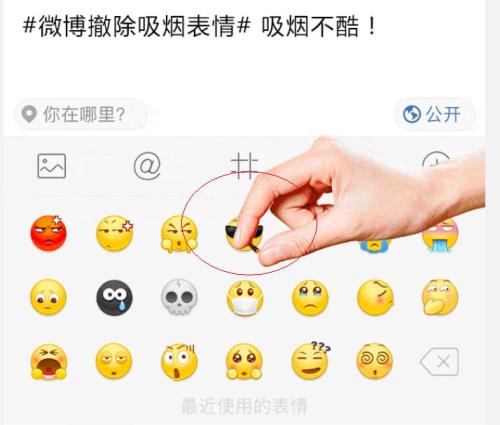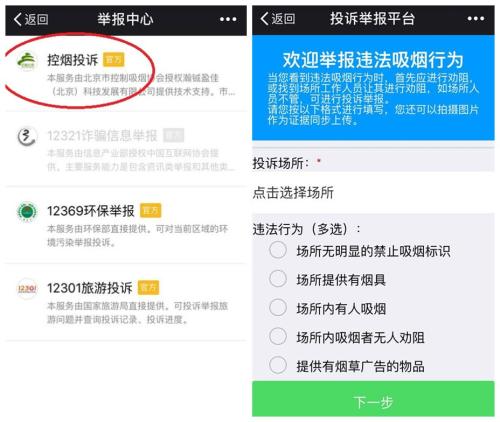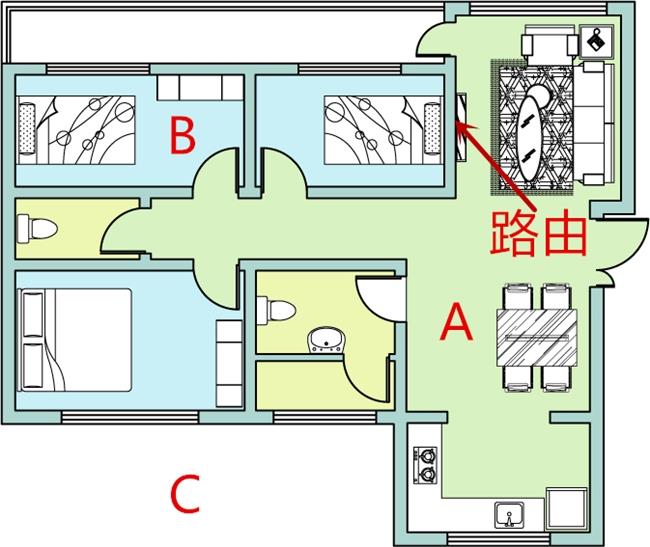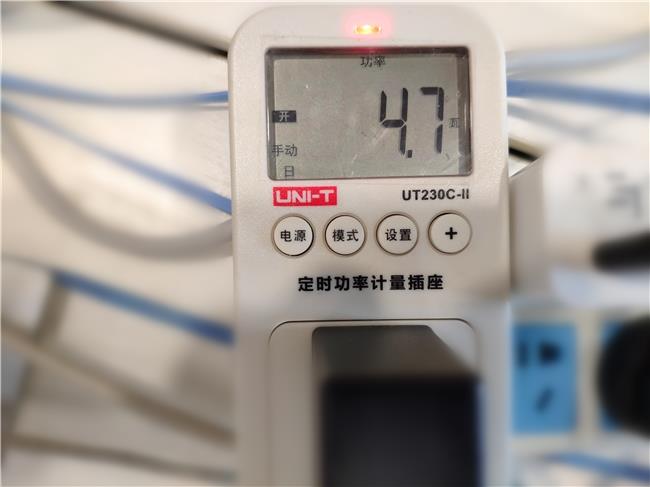Revealing the service struggle when the US Department of Defense was founded
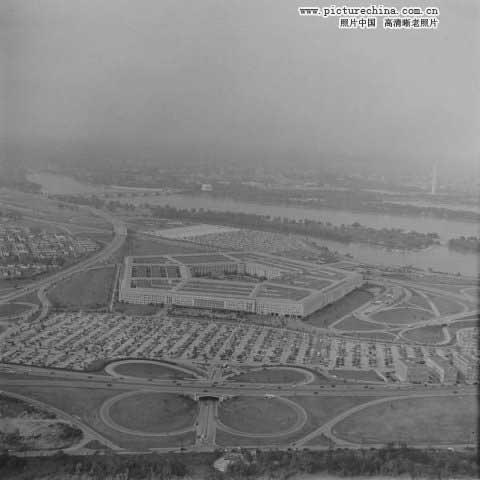
????The Pentagon, located in Arlington, southwest of Washington, D.C., is the headquarters of the United States Department of Defense, the highest military command organ in the United States, with geographical coordinates of 38 52 ′ 15.00 ″ n and 77 03 ′ 21.00 ″ w.. Seen from the air, the building is pentagonal, hence the name "Pentagon".
????Original title: The Department of Defense born in the "Air and Sea War"-The little-known inside story of the struggle when the US Department of Defense was founded
????On August 10th, 2009, the US Department of Defense held a grand celebration ceremony to celebrate the 60th anniversary of the official establishment of the Department of Defense. However, what is little known is that the establishment of the US Department of Defense 60 years ago was the product of struggle and compromise among the three major services of the US military, and one of the events called "Admiral Rebellion" became the direct "fuse" for the birth of the US Department of Defense. Then, in the United States, which flaunts democracy and freedom and pursues the system of "civilian leading", why did the admiral, as an important minister in the army "rebel"? Why is the birth of the Ministry of National Defense linked to this incident? Let’s break through the fog of history and appreciate the thrilling infighting within the US military 60 years ago.
????The Prelude of Conflict —— The National Security Law of 1947
????After World War II, with the rapid improvement of American military strength and international status, the organizational form of the US military, which used to focus on the two independent departments of the sea and land, obviously could not meet the needs of the development of the situation, so a new round of military institutional reform is imperative. In an article entitled "Our armed forces must be unified", Truman once wrote with emotion when talking about the experience and lessons of World War II, "The military institutions we hastily pieced together have always been the cause of disasters … For the sake of national security, a more solid foundation must be established. The first step is obviously to unify the army and navy, so that all our defensive and offensive forces are under the leadership of an institution and an authoritative and responsible headquarters. " Under this background, it has become the top priority of the US military’s military reform work to concentrate on solving the deep-rooted contradictions between Lu Haijun, solving the repetitive construction problems in national defense construction, and establishing a unified military organization to effectively integrate the two major military departments of the sea and land.
????In October, 1945, a motion led by the army with the main content of establishing a unified military organization was submitted to the National Assembly, and the focus of the struggle was mainly on the ownership of the Marine Corps and the Naval Air Force. However, judging from the comparison of the forces of the three major services of the US military at that time, the Army and the Air Force played a decisive role in World War II, so they also mastered the "right to speak" in the new round of national defense institutional reform. The army, headed by Marshall and Eisenhower, spared no effort to publicize the benefits of the alliance, hoping to merge the Marine Corps into the army and form its own amphibious combat force to further strengthen its leading position in the national defense institutions. At the same time, after the baptism of the two world wars, especially in the course of the war against Japan, the Army Air Force (the predecessor of the Air Force), which was "resident" in the army, has been transformed into a veritable "third service" step by step. Therefore, after the war, fanatical air force elements advocated the establishment of an independent air force everywhere, demanding that the aircraft of the army and navy be unified under the command of the Air Force. Based on the affection of "the same ancestry and the same origin", the Army and the Army Air Force reached a tacit agreement on the issue of dividing up the navy’s "heritage", that is, acquiring the Marine Corps and the Naval Air Force. Therefore, a large number of senior army generals, such as Eisenhower, all held a positive attitude towards the independence of the Air Force. Although the navy also played an important role in the Pacific War, the humiliation of Pearl Harbor incident, the nuclear monopoly advantage of the United States after the war and the serious lack of maritime strategic threats,Coupled with the strong pressure of "alliance" between land and air, these factors make the navy in a very embarrassing situation in the new round of national defense institutional reform. In order to publicize the benefits of air force independence and integration, and to retaliate against the numerous obstacles set by the navy on the issue of air force independence in the past, especially the persecution of Billy Mitchell, the "father of the air force", air force elements used their influence to belittle the role of the navy as much as possible everywhere. Frank Armstrong, the backbone of the Air Force, publicly demanded that the functions and functions of the navy be reduced to the level of escort, transport and honor guard, because the navy "will only have a few aircraft carriers, which will have no fighting capacity in any case … and will probably be sunk in the first battle", so "the navy will be useless except providing materials needed by the army, air force and ground forces." Karl spaatz, the first Air Force Chief of Staff, also attacked the Navy in public speeches, which made the Navy faction angry. He pointed out, "Why should we continue to keep the navy? The only reason why we keep the navy may be that many countries still keep the navy, but the Soviet Union has only a small navy, or there is no navy at all, so there is absolutely no need for us to waste money on the navy. "
????Under the dual pressure of "alliance" between land and air, although the navy is well aware of the significance and truth of unified operational command, it has to oppose it for its own interests, because the navy generals are particularly worried that the integration system and the formation of the air force will make them lose the two core arms of naval aviation and marine corps, thus damaging the overall interests of the navy. Therefore, chester nimitz, then Minister of Naval Operations, expressed strong opposition to the idea of integration. He pointed out that "practice has proved that the two departments with separate responsibilities and powers can provide different arms according to the requirements of modern warfare, so it is not only useless but also harmful to the proper division of labor and the effective use of maritime forces to merge the War Department and the Navy Department into a single department." At the congressional hearing, a large number of admirals and members of the navy expressed strong dissatisfaction with Truman’s bill, so they have not reached a consensus on the issue of integration.
????Finally, in order to calm the disputes between the various military forces, especially the dissatisfaction of the navy, Truman had to adopt a compromise plan and make necessary compromises and concessions on some key issues: first, adopt the opinions of the army and set up a unified Ministry of National Defense; Secondly, in response to the demands of air force activists, an independent air force was formed, and Lu Haijun did not keep land-based aircraft; Third, support the opinion of the navy, carrier-based aviation and marine corps will remain in the navy, and the establishment and tasks of the marine corps will remain unchanged. In this context, the US Army and Navy Ministers finally reached an agreement on the issue of unified jurisdiction. On July 26, 1947, President Truman signed the National Security Law, and established the National Security Council, the National Military Department (the predecessor of the Ministry of National Defense), the Air Force Department and the Joint Chiefs of Staff, and established a national military system composed of the Minister of National Defense, the Joint Chiefs of Staff and independent air force, army and navy departments. On September 15th, 1947, JamesVincentForrestal, a former Secretary of the Navy, took office and became the first Secretary of Defense in American history. Three days later, the US Air Force was formally established, and Stuart Semin, a leading figure who made great contributions to the independence of the Air Force, became the first air force minister. However, because the National Security Law of 1947 was established on the basis of a temporary compromise between various military services, compared with the rank and status of the Cabinet Departments of the three major military services, the National Military Department is not a Cabinet Department, but a loose alliance in name only, with only general coordination rights.In addition, with only a small number of staff, it is impossible to fully exercise the functions and powers of the commander-in-chief, and the bill does not clearly stipulate the specific tasks and division of roles of various military species. This congenital deficiency has also laid the groundwork for the outbreak of the largest dispute within the US military after the war.
????The war is rekindled-B-36 VS "Super Carrier"
????At the end of World War II, with the successful development of nuclear weapons and their decisive role in the war against Japan, the US military believed that nuclear weapons would become the "killer weapon" to determine the outcome of future wars, and strategic nuclear bombing would also become a decisive new operational mode in the future, thus making nuclear weapons and the newly formed Strategic Air Force (SAC) the priority targets of the US military’s strategic deployment and military funding. At the same time, the two major services, the air force and the sea force, have launched a new "infighting" for the dominance of the strategic air force. The focus of this struggle is mainly on the weapons development plans of the two major services: the navy’s CV-58 "United States" super aircraft carrier plan and the Air Force’s B-36 "flying arsenal" strategic bomber plan.
????With the help of their supporters, the navy and air force used their influence to attack and slander each other in some public and secret occasions. The navy, represented by Nimitz, believes that the "United States" is of great significance to the navy, because it is the first super aircraft carrier equipped by the navy after the war. This aircraft carrier has the ability to take off and land large aircraft such as strategic bombers, so it is also the navy to maintain its own survival in the nuclear age and compete with the air force for budgetary capital. The Air Force, represented by Stuart Semin and curtis lemay, believes that the US military can achieve a "cheap victory" only by launching nuclear air strikes, without having to carry out heavy casualties on the ground, and without wasting huge sums of money to build a "living coffin at sea"-an aircraft carrier with poor maneuverability and weak viability. As the world’s first strategic bomber with intercontinental long-range bombing capability, the B-36 will replace the old B-29 and B-56.
????However, because the Ministry of National Military Affairs is only a loose alliance, it is impossible to effectively stop the jealousness and infighting between the two ministries. In addition, the Truman administration greatly reduced the military budget after the war, so it is impossible for the two major R&D projects to be launched at the same time, and they can only choose one of them. Therefore, this inevitably intensifies the already tense contradiction between the two services. At first, because Forrester served as the secretary of the navy and was a typical naval faction, the navy gained the upper hand in the initial competition. The CV-58 project was successfully passed and started in Newport News on March 18, 1949. Many navy generals could not help but be complacent, but the navy was too happy. Stuart Semin, the eloquent air force minister, launched a comprehensive propaganda campaign, which gradually won the support of the press, Congress and the army. Bradley, then chairman of the Joint Chiefs of Staff, also expressed support for the Air Force, arguing that "using the navy to carry out nuclear bombing missions will only greatly reduce the ability and suddenness of the Air Force to carry out large-scale explosive missions." Things are unpredictable. Just a few days later, the "United States" was forced to stop construction and dismount because of the fall of the Navy and the coming to power of the Air Force. Due to the opposition to the Truman administration’s policy of reducing military spending, and the constant exposure of media reports about his poor mental condition, Forrester gradually lost Truman’s trust and had to resign on March 28, and the new defense minister was replaced by Louis Johnson, an activist from the Air Force, so the navy became a "super carrier."The plan was inevitably stillborn.
????"Admiral rebelled"
????In April 1949, after the new Secretary of Defense, Louis Johnson, took office, he not only canceled the "super carrier" plan without the approval of Congress, but also repeatedly suppressed the navy’s requirements at the Joint Chiefs of Staff, drastically reduced the navy’s funds, and even canceled the navy and the Marine Corps. Johnson pointed out, "There is no reason to keep the Navy and Marine Corps, because General Bradley told me that amphibious operations have become history, and we will never do amphibious operations again, so there is no need to keep the Marine Corps. In addition, the air force can do everything that the navy can do, so there is no need to keep the navy. " A stone stirred up a thousand waves, which caused an uproar in the United States and became the fuse of the famous "Revolt of the Admirals" in American history.
????A large number of famous naval generals protested and resigned in anger, and many retired naval generals, government and business people related to the navy, and officials and people from all walks of life who lost the location of the shipyard were extremely angry at the Truman administration’s capricious policy. Admiral Daniel Garrett, headed by Major General, began to publish a series of fierce articles and speeches in the United States, attacking Johnson for belittling the navy’s national defense policy and the Air Force’s B-36 bomber plan. Garrett even published a highly inflammatory rebellion statement in an article entitled "Don’t let them sink the navy", calling Johnson an "out-and-out criminal and villain" and demanding that he immediately take the blame and step down. This has caused an uproar in the United States, causing a storm in the city and chaos in Congress, the press, the government and the military. Subsequently, the senior navy generals represented by Admiral Arthur Redford, commander of the Pacific Fleet, began to set off a bigger storm again.
????In order to go all out to attack the Air Force’s B-36 bomber plan by hook or by crook, the Navy once appointed arleigh burke to secretly set up a special office called OP-23, which was mainly responsible for making plans to win the support of the US Congress and the public. In June 1949, an anonymous document not only recorded that Denfield and other senior naval generals expressed strong dissatisfaction with Johnson’s national defense policy, but also accused the relevant officials of the Air Force Department and senior air force generals of fraud and bribery in the B-36 plan, exposing that Johnson and Symington benefited personally and politically from the owner of the aircraft manufacturer, Odlum, and believed that the Air Force had unfair competition in the bidding stage of aircraft, and received defective aircraft to make personal profits at the expense of national defense interests. This accusation makes the Air Force extremely angry, because it has done great damage to the honor of Air Force officers and the reputation of the Air Force Department. Congress launched a series of hearings to investigate the so-called "B-36 procurement fraud case". At the congressional hearing, Air Force Minister Semin Clinton and Air Force Chief of Staff arthur vandenberg refuted Radford’s point of view one by one. After investigation, Congress also thought that many accusations of the navy lacked rationality and appropriateness and were untenable. Bradley, the general of the army, also refuted the accusation of the navy, and pointed out that the naval disturbance was an "open rebellion against the civilian leadership system", and its essence was to resist the unified command and plan of the US military "in spirit and action".And "the constant quarrel in the supreme command organization is like a drop of poison dripping into wine, which makes all the sharers suffer." After an in-depth investigation, the congressional investigation report pointed out that "there is not a bit, even a little bit of evidence to prove the allegations of premeditated, fraudulent, bribery, bullying or favoritism in the procurement of B-36 bombers" and proved that the "documents" provided by the navy were forged, and the initiator behind it was Colonel John G. Grommelin, deputy director of the OP-23 office. The report also pointed out that "the Ministry of National Defense has made great efforts to pursue the’ unification’ of the services, and the pace is too fast." Moreover, in this struggle, "the navy that refused the’ marriage’ of the services, the army that was too proud of itself, and the somewhat unruly air force made the Committee not find any’ Puritans’ in the Ministry of National Defense who fully supported reunification and had pure motives."
????In the end, this "air-sea war" ended with the navy’s breach of trust in the world and the air force’s victory: the B-36 plan continued, but the navy’s "super carrier" plan was forced to dismount, and an article in Time magazine of the United States also dubbed the ups and downs of the service struggle within the US military as the "Admiral Rebellion" incident. The "Admiral Rebellion" incident not only shocked the whole United States, but also made the top officials of the United States realize the importance of strengthening the authority of the Ministry of National Defense. In this context, the US Congress passed the amendment to the National Security Law on August 10th, 1949, which renamed the loosely structured "National Military Department" as the "Ministry of National Defense", upgraded it to the Cabinet Department, and further strengthened the power of the Minister of National Defense, reducing the ranks of the three major military departments of land, sea and air from the Cabinet Department to the directly affiliated department of the Ministry of National Defense, and the Minister of Military Services is no longer a member of the National Security Council and the Cabinet. In addition, in order to limit the competition between services, the post of Chairman of the Joint Chiefs of Staff was established with the approval of Congress. As the chief military adviser to the President and the Secretary of Defense, it was held by senior military generals, which also laid the foundation for the modern defense commander system in the United States.
????Silent ending
????Finally, the navy became a complete loser in this struggle: Navy Minister Sullivan resigned; Naval Operations Minister Denfeld was forced to "retire early"; Garrett was tried by a military court, which completely ruined his future; Truman also chose the mediocre "good guy" Matthews and the more obedient forrest sherman as the secretary of the navy and the minister of operations respectively, regardless of the strong opposition of the navy generals. Forester, the former secretary of defense who was born as the secretary of the navy, also committed suicide because of the mental disorder caused by the intensified service struggle. Although the personal endings of these senior naval officers were not very good, they were regarded as heroes by the navy because they sacrificed their lives and future to safeguard the survival and honor of the navy in this struggle. After the "Super Carrier" plan died, the US Congress decided to build a smaller aircraft carrier for the navy in order to appease the navy’s mood, and this aircraft carrier was named "Forrester". In addition, although the "Admiral Rebellion" incident ended in the failure of the navy, the subsequent "counterattack" by the Marine Corps also made the navy regain some face. In August 1950, under the strong pressure of the navy faction in Congress, the Truman administration was finally forced to agree to set up a representative of the Marine Corps in the Joint Chiefs of Staff. Although the Marine Corps is still under the jurisdiction of the Navy, it has a place in the Joint Chiefs of Staff, so it has become the fourth largest service on an equal footing with the army, navy and air force.
????At the same time, another protagonist in the "naval rebellion", Defense Minister Johnson of the Air Force faction, also suffered a bad result because of his arrogant and tough treatment of the navy. After the "Admiral Rebellion" incident, Truman, as Johnson’s immediate superior, was also humiliated in Congress, government and army, so he gradually lost his trust in Johnson. He wrote in his private diary, "Everything that happened made me begin to believe that Potomac fanaticism and a morbid state have made Louis show a mental disorder and selfish arrogance trying to drive the whole government, because he offended everyone in the cabinet … and never missed every opportunity to speak ill of people around me." Secretary of State Acheson also said in his memoirs that Johnson’s behavior was "very hateful, and it was not enough to just swear." Bradley hit the nail on the head and pointed out that "Truman inadvertently appointed a mental patient to replace another mental patient." Because Johnson suppressed the navy too hard, the navy did not have enough ships to carry out the task of sea blockade in the subsequent Korean War. A year later, in August 1950, Truman dismissed Johnson and appointed george marshall, who was low-key, well-balanced and highly respected in the military, as the new Secretary of Defense. At this point, the "Admiral Rebellion" incident, which caused a lot of trouble in the city, finally came to an end.

